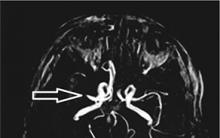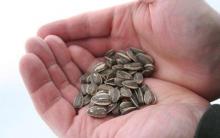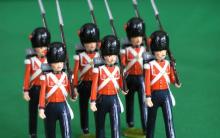- A a a
- B b b b b
- In in ve
- G g g
- D d d e
- E e e
- Yo yo yo
- Zhe zhe
- Z ze ze
- And and and
- Thy and short
- K k ka
- L l el
- Mm um
- N n en
- Ooo
- P p pe
- R r er
- S with es
- T t teh
- U u u
- F f ef
- X x ha
- Ts ts tses
- Ch h wh
- Sh sh sha
- Shch shcha
- ъ hard sign
- s s
- b soft sign
- Uh uh
- Yu Yu Yu
- I I I
| 42 sounds | |||||
|---|---|---|---|---|---|
| 6 vowels | 36 consonants | ||||
| [a] [i] [o] [y] [s] [e] | Doubles | Unpaired | |||
| Drums | Unstressed | Voiced | Deaf | Voiced | Deaf |
| [b] [b"] [in] [in"] [g] [g"] [d] [d"] [and] [z] [z"] | [n] [n"] [f] [f"] [k] [k"] [t] [t"] [w] [s] [s"] | [th"] [l] [l"] [mm"] [n] [n"] [r] [r"] | [x] [x"] [ts] [h"] [sch"] |
||
| Doubles | Unpaired | ||||
| Solid | Soft | Solid | Soft | ||
| [b] [V] [G] [d] [z] [To] [l] [m] [n] [P] [R] [With] [T] [f] [X] | [b"] [V"] [G"] [d"] [z"] [To"] [l"] [m"] [n"] [P"] [R"] [With"] [T"] [f"] [X"] | [and] [ts] [w] | [th"] [h"] [sch"] |
||
How do letters differ from sounds?
Sound is elastic vibrations in any medium. We hear sounds and can create them, among other things, with the help of the speech apparatus (lips, tongue, etc.).
A letter is a symbol of the alphabet. It has a capital (excl., ь and ъ) and lowercase version. Often a letter is a graphic representation of the corresponding speech sound. We see and write letters. To ensure that the writing is not affected by the peculiarities of pronunciation, spelling rules have been developed that determine which letters should be used in the word in question. The exact pronunciation of a word can be found in the phonetic transcription of the word, which is shown in square brackets in dictionaries.
Vowels and sounds
Vowel sounds (“glas” is the Old Slavonic “voice”) are the sounds [a], [i], [o], [u], [s], [e], in the creation of which the vocal cords are involved, and on the way no barrier is erected to the exhaled air. These sounds are sung: [aaaaaaa], [iiiiiiiii] ...
Vowel sounds are designated by the letters a, e, e, i, o, u, y, e, yu, i. The letters e, e, yu, i are called iotized. They denote two sounds, the first of which is [th"], when
- are the first in the phonetic word e le [y" e ́l"e] (3 letters, 4 sounds) e sche [th" and ш"о́] (3 letters, 4 sounds) еж [й" о ́ш] (2 letters , 3 sounds) Yu la [y" u ́l"a] (3 letters, 4 sounds) I block [y" a ́blaka] (6 letters, 7 sounds) I ichko [y" and ich"ka] (5 letters, 6 sounds)
- follow after the vowels birdie d [pt "itsy" e ́t] (7 letters, 8 sounds) ee [yiy" o ́] (2 letters, 4 sounds) kayu ta [kai" u ́ta] (5 letters, 6 sounds) blue [with "in" a] (5 letters, 6 sounds)
- follow after ь and ъ е зд [вй" е ́ст] (5 letters, 5 sounds) rise m [fall" о ́м] (6 letters, 6 sounds) lyu [л"й" у ́] (3 letters, 3 sounds ) wings [wing "th" a] (6 letters, 6 sounds)
The letter and also denotes two sounds, the first of which is [th"], when
- follows after ь nightingale [salav "й" and ́] (7 letters, 7 sounds)
In a word, vowel sounds that are emphasized during pronunciation are called stressed, and those that are not emphasized are called unstressed. Stressed sounds are most often both heard and written. To check which letter needs to be placed in a word, you should select a single-root word in which the desired unstressed sound will be stressed.
Running [b"igush"] - running [b"ek] mountain [gara] - mountains [mountains]
Two words united by a single accent make up one phonetic word.
To the garden [fsat]
There are as many syllables in a word as there are vowels. The division of a word into syllables may not correspond to the division during hyphenation.
e -e (2 syllables) to -chka (2 syllables) o -de -va -tsya (4 syllables)Consonants and sounds
Consonant sounds are sounds that create an obstruction in the path of exhaled air.
Voiced consonants are pronounced with the participation of the voice, and voiceless consonants are pronounced without it. The difference is easy to hear in paired consonants, for example, [p] - [b], when pronounced, the lips and tongue are in the same position.
Soft consonants are pronounced with the participation of the middle part of the tongue and are indicated in transcription by an apostrophe " what happens when consonants
- are always soft [th"], [ch"], [sch"] ai [ai" ] (2 letters, 2 sounds) ray [ray" ] (3 letters, 3 sounds) bream [l "esch" ] (3 letters, 3 sounds)
- follow before the letters e, e, i, yu, i, b (excl., always hard [zh], [ts], [sh] and in borrowed words) mel [m "el"] (4 letters, 3 sounds) aunt [t"ot"a] (4 letters, 4 sounds) people [l"ud"i] (4 letters, 4 sounds) life [zh yz"n"] (5 letters, 4 sounds) circus [ts yrk] (4 letters, 4 sounds) neck [sh eyya] (3 letters, 4 sounds) tempo [t emp] (4 letters, 4 sounds)
- come before soft consonants (some cases) pancake [bl"in" ch"ik]
Otherwise, consonant sounds will predominantly be hard.
Sibilant consonants include the sounds [zh], [sh], [h"], [sch"]. Speech therapists rule their pronunciation penultimately: the tongue must be strong and flexible to resist exhaled air and be held against the roof of the mouth in the shape of a cup. The last ones in line are always vibrating [p] and [p"].
Do schoolchildren need phonetics?
Without dividing into vowels, consonants, stressed and unstressed, of course, it is impossible. But the transcription is clearly too much.
Speech therapists are required to know phonetic analysis of words, and it can probably be useful to foreigners.
For students (from 1st grade!) who have not yet mastered the rules of spelling, a fairly in-depth study of phonetics only hinders, confuses and contributes to incorrect memorization of the spelling of words. It is “back” that the child will associate with the pronounced “run”.
In the Russian language, not all speech sounds are designated, but only the main ones. The Russian language has 43 basic sounds - 6 vowels and 37 consonants, while the number of letters is 33. The number of basic vowels (10 letters, but 6 sounds) and consonants (21 letters, but 37 sounds) also does not match. The difference in the quantitative composition of basic sounds and letters is determined by the peculiarities of Russian writing. In Russian, a hard and soft sound is denoted by the same letter, but the sounds soft and hard are considered different, which is why there are more consonant sounds than the letters with which they are denoted.
Voiced and voiceless consonants
Consonant sounds are divided into voiced and voiceless. Voiced ones consist of noise and voice, deaf ones consist only of noise.
Voiced consonant sounds: [b] [b"] [c] [v"] [d] [g"] [d] [d"] [z] [z"] [zh] [l] [l"] [ m] [m"] [n] [n"] [r] [r"] [th]
Voiceless consonants: [p] [p"] [f] [f"] [k] [k"] [t] [t"] [s] [s"] [w] [x] [x"] [ h"] [h"]
Paired and unpaired consonants
Many consonants form pairs of voiced and voiceless consonants:
Voiced [b] [b"] [c] [c"] [g] [g"] [d] [d"] [z] [z"] [g]
Voiceless [p] [p"] [f] [f"] [k] [k"] [t] [t"] [s] [s"] [w]
The following voiced and voiceless consonant sounds do not form pairs:
Voiced [l] [l"] [m] [m"] [n] [n"] [r] [r"] [th]
Voiceless [x] [x"] [ch"] [sch"]
Soft and hard consonants
Consonant sounds are also divided into hard and soft. They differ in the position of the tongue when pronounced. When pronouncing soft consonants, the middle back of the tongue is raised towards the hard palate.
Most consonants form pairs of hard and soft consonants:
Solid [b] [c] [d] [d] [h] [j] [l] [m] [n] [p] [r] [s] [t] [f] [x]
Soft [b"] [c"] [d"] [d"] [z"] [k"] [l"] [m"] [n"] [p"] [p"] [s"] [ t"] [f"] [x"]




The following hard and soft consonant sounds do not form pairs:
Solid [f] [w] [c]
Soft [h"] [sch"] [th"]
Sibilant consonants
The sounds [zh], [sh], [ch’], [sh’] are called hissing.

[g] [w] [h"] [sch"]
Whistling consonants

[z] [z"] [s] [s"] [ts]
Whistling sounds s-s, z-z, anterior lingual, fricative. When articulating hard teeth, the teeth are exposed, the tip of the tongue touches the lower teeth, the back of the tongue is slightly curved, the lateral edges of the tongue are pressed against the upper molars, causing a groove to form in the middle. Air passes through this groove creating frictional noise.
When pronouncing soft s, s, the articulation is the same, but in addition the back of the tongue rises to the hard palate. When pronouncing sounds z-z, the ligaments are closed and vibrate. The velum is raised.
Today, almost all children know letters and the alphabet already in early childhood. However, it is recommended to learn letters without naming the letters as they sound in the alphabet. Letters must be taught with sounds. When talking about the letter “B”, it is necessary to call it [b], and not “be”. This is necessary so that it will be easier for the child to combine letters into syllables and words.
However, the world of sounds does not end there. And when the baby grows up, he will have to master such concepts as vowel sounds, hard, soft, paired, voiceless and voiced consonants. I invite you to talk today about such different sounds. We will talk about this in a fairy-tale form, in a form closest to children's perception. I invite you to phonetic tale . This is an expanded version of the tale of sounds, presented in.
So, friendly letters live in a hospitable place. And sounds created a large Kingdom called Phonetics.
Kingdom of sounds - Phonetics
In the kingdom of sounds of the Russian language Phonetics we lived together and got along vowels And consonants sounds. Each sound had its own house. For vowels, the houses were painted red, and for consonants, blue. But the roofs of all the houses were white and changed on their own when the sounds visited each other.
Total in the kingdom 42 inhabitants: 6 vowel sounds [a], [e], [o], [u], [i], [s] and 36 consonants. They lived amicably and often visited each other. And every time they visited each other, magic happened: as soon as they held hands, new sounds were created for new words.
Vowel sounds loved to be sung. Therefore, there was always music playing in their houses. But with consonant sounds it was not possible to sing at all. But they were very pliable and always “agreed” with the vowels in everything. At the same time, they could become hard or soft . For example, the sound [p]. In a word "saw" sounds soft, but in words "dust"- firmly. And all because the sound [i] softened the [p], and the sound [s], on the contrary, made it harder.
This is how consonant sounds, joining hands with vowels, become soft or hard at their request.
However, there were also “naughty” sounds in the kingdom. And although they lived in blue houses and were called consonants, they did not want to change in any way. And this happened on the day when, sitting idly on benches, they argued about who was more important: vowels or consonants. And sounds [and],[w] And [ts] decided to become independent and not obey anyone, especially vowel sounds. They proclaimed themselves to be hard sounds that would never, under any circumstances, become soft! And to prove their firm decision, they painted the white roofs of their houses dark blue.
But compliant and non-conflicting sounds [sch],[th] And [h] They were very upset and afraid that the balance of the ratio of sounds in the kingdom would be upset and decided to remain soft forever. And so that all the residents of Phonetics knew about this, they painted the roofs of their houses green.
However, soon 2 more inhabitants appeared in the kingdom of Phonetics - soft and hard signs. But they did not violate the unity of the sound world. The soft sign helped the consonants become soft, and the hard sign helped the consonants become hard. They built themselves white houses and everyone lived peacefully and amicably.
But the inhabitants of the Kingdom of Phonetics were famous not only for their hard and soft characters. Many of them had and still have their own special preferences. Some sounds loved the sound of falling leaves, while others loved the sound of rain. They even built separate quarters for themselves so that in one the bell always rings loudly, and in the other, as if under a dome, it is dull and noisy... This is how they appeared voiced and voiceless consonants . And a river flows between the blocks.

So in the quarter with the bell the sounds [r], [l], [m], [n], [y], [b], [g], [v], [d], [z], [z] settled . And in a quiet quarter - [p], [f], [t], [w], [s], [k], [x], [ts], [h], [sch]. And some letters became so friendly that they connected their houses with bridges. So there is a bridge between the sounds p-b, f-v, t-d, sh-zh, s-z and k-g. This paired consonants .
This is how the amazing Kingdom of Phonetics lives. The sounds visit each other, change, adjust, make noise, shout, sing... They have fun. And in this fun words are born, from them the sentences that make up our speech. By the way, speech happens... However, we’ll talk about this another time.
How to learn soft and hard consonants
These are the complex relationships between sounds. To make it easier for my son to draw phonetic diagrams of words, he and I made very convenient clouds. Using them, it is very easy to determine the hardness or softness of consonant sounds.

Read about how we taught hard and soft consonants using clouds.
How to distinguish between voiced and voiceless consonants
And a very simple technique helped us make it easier for the child to distinguish between voiced and voiceless consonants. When naming the sound, press your palm to your neck. If the sound is ringing, then vibration (tremor) of the vocal cords is felt. If the sound is dull, there will be no vibration.
For the same purposes, we used the picture with houses and bridges across the river, which you saw above.
Enjoy your acquaintance with the world of Phonetics!
All the best!
In the Russian language there are voiced and voiceless consonants. When studying phonetics (the study of speech sounds) and graphics (the study of letters of the alphabet), it is necessary to clearly know which sounds are unvoiced and which are voiced.
What is it for?
The fact is that in the Russian language, letters denoting voiced consonants are not necessarily read voiced in all cases. There are also cases when letters denoting dull sounds are read loudly. The correct correlation of letters and sounds will significantly help in learning the rules of writing words.
Let us examine in more detail what the concepts of deafness and voicedness mean. The formation of voiced consonants occurs due to noise and voice: the air stream not only overcomes the obstacle in the oral cavity, but also vibrates the vocal cords.
- The following sounds are voiced: b, v, g, d, zh, z, l, m, n, r, y.
- However, in phonetics, from this series of sounds, the so-called sonorant sounds are also distinguished, which are as close as possible in their characteristics to vowel sounds: they can be sung and prolonged in speech. These sounds include y, r, l, n, m.
Voiceless consonant sounds are pronounced without the participation of the voice, only with the help of noise, while the vocal cords are relaxed.
- These letters and sounds include the following: k, p, s, t, f, x, c, ch, sh, shch. In order to make it easier to remember all the voiceless consonants in the Russian language, you need to learn the phrase: “Styopka, do you want shchetc?” - “Fi!” All consonant sounds in it are unvoiced.
Pairs of voiced and voiceless consonants
Voiced and unvoiced sounds and the letters denoting them are contrasted in Russian and form pairs:
- b-p,
- w-f,
- g-k,
- d-t,
- ss,
- w-sh.
If we take into account that the consonants in these pairs can also be soft (except zh-sh), then there are a total of 11 contrasting pairs of deafness and voicedness. The listed sounds are called paired. The remaining voiced and unvoiced sounds do not have pairs. The voiced unpaired ones include the above sonorants, and the voiceless ones include x, c, ch, shch. The table of consonants presented on our website will help you study these sounds in more detail.
Click on the picture to print a table with voiced and voiceless consonants
How is it that letters in the Russian alphabet can represent several sounds?
Features of the pronunciation of a sound are often predetermined by its position in the word. Thus, a voiced sound at the end of a word is deafened, and this position of the sound is called “weak”. Stunning can also occur before the next voiceless consonant, for example: pond, booth. We write voiced consonants and pronounce: twig, butka.
Conversely, a voiceless consonant can become voiced if it is followed by a voiced sound: threshing, but we pronounce malad ba. Knowing this feature of Russian phonetics, we check the spelling of consonants at the end and middle of a word using test words: molotba - thresh, pond-ponds, booth - booth. We select the test word so that after the dubious consonant there is a vowel.
To remember what a sound is according to its characteristics, it is necessary to make mental associations of the sound with some object, event or natural sound. For example, the sound sh is similar to the rustling of leaves, and the sound z is similar to the hum of bees. The association will help you find your way in time. Another way is to create a phrase with a specific set of sounds.
Thus, knowing the letter-sound relationship is extremely important for spelling and correct pronunciation. Without studying phonetics, it is impossible to study and correctly perceive the melody of a language.
Video lesson about voiced and voiceless consonants:
Tralik and Valik about voiced and voiceless consonants
Another video lesson for children with riddles about voiced and voiceless consonants
What sounds are called consonants?
What does a consonant sound consist of?
What are the different consonant sounds?
How many consonant letters and consonant sounds are there in the Russian alphabet?
Which consonants are always hard and which are always soft?
What letters indicate the softness of a consonant?
Sounds in the pronunciation of which the air encounters an obstacle in the mouth are called consonant sounds. A consonant sound consists of noise and voice or only noise.
Consonant sounds are divided into voiced and unvoiced. Voiced ones consist of noise and voice, while deaf ones consist only of noise.
The sounds only consist of noise: [k], [p], [s], [t], [f], [x], [ts], [ch], [sh], [sch]. These are voiceless consonants.
Many consonant sounds form pairs by voicing -deafness: [b] — [p], [v] — [f], [g] — [k], [d] — [t], [z] — [s], [w] — [w].
To memorize voiced consonants, you can learn the phrase: “ THE LION AND THE TOAD HAVE MANY FRIENDS».
See all phrases for memorizing voiced and voiceless consonants.
Voiceless consonants are easy to remember from the phrase: “ STYOPKA, DO YOU WANT A CHECK?— Ugh!».
Consonant sounds are indicated by letters:
B,IN,G,D,AND,Z,Y,TO,L,M,N,P,R,WITH,T,F,X,C,H,Sh,SCH.
In total, the Russian language has 21 consonants.
Consonant sounds are also hard and soft.
Hard and soft sounds differ in the position of the tongue when pronounced. When pronouncing soft consonants, the middle back of the tongue is raised towards the hard palate.
Most consonant sounds form pairs based on hardness and softness:
The following hard and soft consonant sounds do not form hard-softness pairs:
| Solid | [and] | [w] | [ts] |
|---|---|---|---|
| Soft | [h❜] | [sch❜] | [th❜] |
Table “Consonant sounds: paired and unpaired, voiced and voiceless, hard and soft” (grades 1-4)
Note: in elementary school, hard consonant sounds are indicated in blue, soft consonant sounds in green, and vowel sounds in red.
Hardness consonant sounds are indicated in writing by vowels A , ABOUT , U , Y , E .
Softness consonant sound is indicated in writing by vowels E, Yo, I, Yu, I, as well as the letter b(soft sign).
Compare: nose[nose] - carried[n❜os], corner[corner] - coal[ugal❜].
Unpaired voiced sounds [й❜], [l], [l❜], [m], [m❜] [n], [n❜] [р], [р❜] are called sonorous, which means “sonorous” in Latin.
The sounds [zh], [sh], [ch❜], [sch❜] are called sizzling. They got this name because their pronunciation is similar to hissing.
The sounds [zh], [sh] are unpaired hard hissing sounds.
The sounds [ch❜] and [ш❜] are unpaired soft hissing sounds.
The sounds [c], [s❜], [z], [z❜], [ts] are called whistling.
Consonant can not be stressed or unstressed.
In the Russian language, there are more consonant sounds (36) than consonant letters (21), since one letter can denote paired hard and soft sounds: for example, the letter L (el) denotes the sounds [l] and [l❜].
Attention! A consonant sound can form a syllable only with











Consequences of tubal ligation during caesarean section
The benefits of sunflower seeds for the heart, hair and nerves
Why do my legs give way at the knees?
Name energy: how the patronymic influences fate and the birth program Name patronymic meaning character
First Chinese Emperor